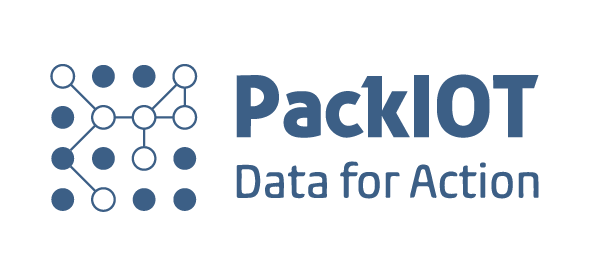By Mariana Costa, Marketing Specialist at PackIOT
Introducing Industry 4.0 is always a disruptive and challenging process for businesses and their employees. Manufacturers are progressively getting familiar with the idea of the smart factory and it is becoming hard to ignore its advancements towards becoming the new reality of the industry. One thing is clear: companies should prepare ahead and rethink their approach as the industry continuously advances towards the implementation of 4.0 technologies.
As we already saw in previous blog posts, the technology of Industry 4.0 consists of interconnected systems. Consequently, data is shared across these systems allowing for the creation of meaningful insights. Manufacturers are then in the right position to analyze and make the best decisions for their factories towards a more lean environment (reducing expenses and optimizing operations).
By now, you are probably wondering what are the exact steps you need to take to finally start your journey with Industry 4.0. We thought about this and compiled a list of the five main steps towards implementing 4.0 technologies to transition to the Smart Factory!
1_Identify Pain Points and Pick a Vendor
The first step to start this journey is to document the pain points you would like to address with the new technology and vendor. It is important that this partner the company chooses will be a risk reducer. Important questions to ask yourself? Are they working with similar companies? Can they customize solutions for your needs? Will they provide consistent support from initial assessments and delivery to continued technical support?
These combination will help you and other manufacturers reduce risk while adopting the right technology that provides the right competitive advantages.
2_Trust in New Technology
Implementing new technology in a new environment always comes with a learning curve associated as employees adapt and understand the change. The workforce can be more skeptical of new implementations that will necessarily impact their workflow. For this reason, the leadership has a crucial role which is helping everyone understanding and trusting technology and how it will be a crucial part of the workflow to solve pre-existing problems.
At this stage, we should expect to have a plant manager asking themselves if there is enough data to prove this is a reliable and effective solution and what is the best way to use this data and demonstrate value to the organization.
Management must take on the responsibility of the change and adaptability in order to help the organization step forward towards the new 4.0 technologies.
3_Adopt the New Solutions
Adoption can be the toughest step as companies need to make sure the new solution is being used to its full potential. Human change and adaptation is what can make this step the most challenging of them all. It’s expected to experience some resistance, difficulty, slowness and mess – it’s the human nature speaking when facing moments of disruption.
In order to guarantee success, it is very important that employees recognize the true value of new technologies and how these can bring improvements to efficiency and predictability.
Education training is at the core of this third step to ensure the whole workforce is fully prepared to adopt new solutions and deliver optimal results.
4_Measure Predictability
In materials handling activities, unpredictability is an expected enemy. The truth is there is always a productivity or throughput metric that can be measured and help to track predictability. The extraction and analysis of data will quantify the predictability or variance of the technology when compared to the KPIs defined prior to installation of new smart systems.
KPIs of material handling activities are essential to a business’s assessment of new technology but this is only one component of a larger system. It’s the connected data gathered per technology vertical that will allow the identification of pain points within the system that have the highest impact on financial results. This will allow the identification of a new level of variance which increases predictability.
5_Optimize
Optimization is the stage in which it is possible for manufacturers to identify where technology is performing well and where there is space for improvement. With the assessment of quantitative data it is possible to understand where variance is coming from and adjust the process accordingly. Identifying variances in the data allows for corrective action, leading to an overall optimization of processes.
To successfully complete the last step towards the journey of Industry 4.0 it is essential to acknowledge insights provided by data and identify key points of variance to enable optimization in your factory. This is the step that will take the longest to achieve but once you get there, your factory will experience a meaningful improvement at all levels, including a positive impact on financial results.




